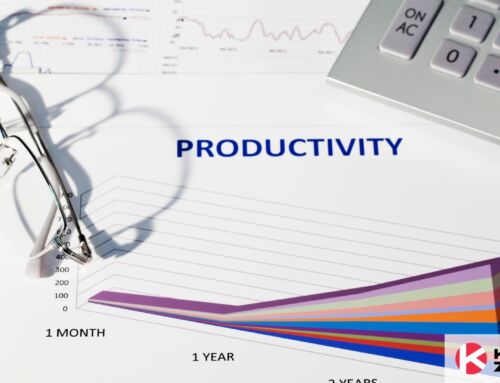
We entered a new year where we had endless opportunities to make our dreams come true and achieve our goals. That being said, if you didn’t define your New Year’s resolutions and goals in the last month of 2022, now is the best time to do that, while the year is still fresh and there’s plenty of time to achieve your goals. If you’re a new business owner who’s focused on growth, completing your goals timely will allow your business to grow. But, what if you define your fears instead?
As a business owner, you probably have a lot of plans and goals for your business and its future. However, anyone who owns a business should be aware of certain risks that come with it and the fears they awaken.
Defining your fears instead of goals may look confusing. After all, why would someone want to be reminded of fears every day while working towards achieving their goals?
Perhaps, defining your fears and actions that trigger them instead of goals may help you create a better picture of how you want to run your business. Goal setting tells you what to focus on while defining what scares you will give an insight into how to achieve those goals.
In this article, we’ll delve into the meaning of “Fear Setting”, a methodology of defining your fears and actions that’d follow if you took the risks that resulted in them. It’s a powerful tool developed by Tim Ferris who described it in a TED talk episode.
The Fear Setting
The Fear Setting is a powerful tool consisting of three pages defined as checklists to help you define your fears and the worst possible outcomes should they be realized. Many entrepreneurs use it to track their fears as well as fears in their business and other aspects of their lives.
It’s perfect for people who work in chaotic settings, where one small change could trigger a mountain of larger changes that could be both good and bad for your business. It’s supposed to be a simple exercise where you visualize your worst possible fears, write them down in detail and recognize ways to take advantage of certain actions.
It’ll allow a more stoicism-centered approach to problems that keep adding up in the high-stress environment. Additionally, it’ll help you organize your workplace and be more productive in the process. Below we detailed all three pages of the Fear Settings and what they contain.
Page 1
The first page consists of three lists, which can be defined as a table with three columns. Depending on how many fears you have, it’d be best to define 10 to 20 entries as they’ll represent 10 to 20 fears you have regarding your organization. The lists are as follows:
- Define – this is the list where you define your fears. In other words, what your worst fears are.
- Prevent – Here you list one thing for each fear that can prevent them from happening and how to do it.
- Repair – In case you can’t prevent your worst fears from happening and they do happen, what are some things you can do to repair the damage done?
Page 2
Page two details the good sides of taking a certain action that you either fear or action that prevents the fear from coming true. Once you define your fears you’ll have to define the benefits too.
That being said, page two should contain all the benefits that come from taking a certain action. Oftentimes, running a business requires us to take risks, but those benefits should be well-calculated and bring success and numerous benefits to the company, otherwise, it wouldn’t be worth taking the risk in the first place.
Page 3
Page three brings three new lists for us to work with. Instead of discussing the consequences and benefits of the taken action, on this page you’ll be writing about the weights of inaction. In other words, here you will list what will happen if you don’t take the risk or action that you fear doing.
The three lists we mentioned earlier are based on a period of:
- 6 months
- 1 year
- 3 years
In simple words, you have to think of an action that you want or should take regarding your business, relationships, career, education, and other aspects of your life, but you’re scared to. Once you do, you’ll list what the consequences of not taking that action will have on your life, and the aspects we listed above.
Seeing all the negative consequences of not taking the action may make you change your mind about taking that action. On the other hand, you may see some things that are not quite as bad as you initially imagined them to be. That way, you can overcome your fears and take control of your life.
Define Your Fears Instead of Goals With Kanban
The Fear Setting is an interesting way to provide a detailed analysis of your business and get insights about the right steps you should take to successfully manage your business.
A comprehensive Kanban board can help you identify your fears. Working on it consistently can help you overcome fears through organization, dedication, and consistency. Kanban Zone’s personal Kanban board is equipped with all the bells and whistles to help you apply The Fear Setting to your business and career, as well as other organization methodologies. Create your account here and get started with Kanban Zone!
Table Of Contents
Discover many more posts…







